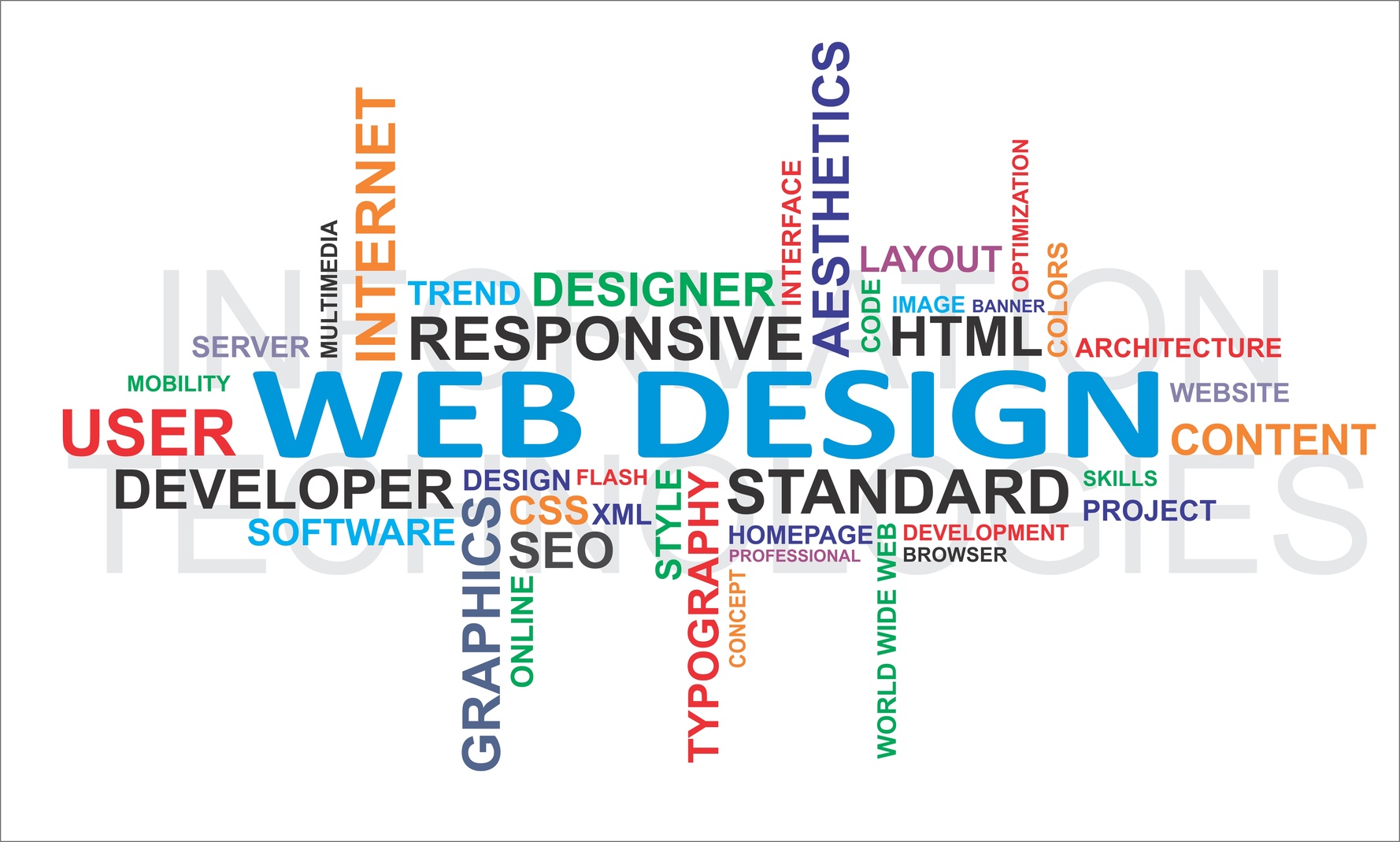Key Considerations to Keep in Mind When Developing a Modern Website Design That Straightens With Existing Fads
In the ever-evolving landscape of website design, it is necessary to think about numerous essential variables that not only mirror existing fads but also improve user interaction. A receptive design is paramount, making certain that customers experience smooth capability throughout numerous devices. Prioritizing customer experience via user-friendly navigation and visual charm can not be overlooked. The intricacies expand beyond simple visuals and functionality; comprehending the detailed balance of accessibility and performance optimization is similarly crucial. As we explore these dimensions, the effects for modern website design come to be progressively significant. What might these considerations expose about the future of electronic experiences?
Responsive Design Concepts

The core of responsive style hinges on its capacity to readjust layout and content based on the user's display dimension and positioning. By employing loved one devices like portions rather of taken care of devices like pixels, developers can produce scalable layouts that keep visual integrity. In addition, using media inquiries permits the application of various designs relying on the characteristics of the tool, helping with tailored experiences that boost usability.
In addition, responsive style is not simply a technical factor to consider; it is essential in accommodating the boosting usage of smart phones for net browsing. As individual expectations progress, making sure accessibility and performance throughout all platforms ends up being crucial for maintaining interaction and satisfaction. Hence, accepting responsive style principles is vital for modern web growth, fostering inclusivity and future-proofing electronic content.

Emphasis on Customer Experience
Individual experience (UX) has arised as a central focus in modern-day web design, matching the principles of receptive style by focusing on exactly how individuals communicate with web sites. A well-designed UX can dramatically influence customer engagement, retention, and contentment, highlighting the requirement for developers to develop enjoyable and user-friendly experiences.
Key components of reliable UX layout consist of usability, capability, and visual appeals. web design. Sites ought to be easy to browse, making certain customers can discover the information they seek without confusion. Succinct and clear navigating menus, regular design, and logical web content company are essential in attaining this goal. Additionally, functionality plays a critical function; interactive components have to function effortlessly throughout all devices and browsers.
Visual factors to consider can not be forgotten, as an aesthetically enticing design can enhance individual assumption and urge expedition. Color schemes, typography, and imagery should be attentively integrated to produce a cohesive and engaging interface.
Additionally, including individual feedback into the design process is crucial. Conducting usability testing and event insights from real individuals can supply beneficial details to refine the design and address pain points. Eventually, a solid focus on customer experience will help produce sites that reverberate with advice visitors, cultivating commitment and driving conversions.
Importance of Availability
Ease of access is a fundamental aspect of modern-day website design, guaranteeing that all customers, despite their disabilities or capacities, can connect and navigate with digital content properly. As the internet comes to be progressively essential to everyday life, it is necessary that sites are inclusive, dealing with a diverse audience that consists of individuals with aesthetic, acoustic, cognitive, and electric motor impairments.
Implementing accessibility features not only follows lawful demands, such as the Americans with Disabilities Act (ADA) and the Web Content Availability Standards (WCAG), however additionally improves user experience for every person. Easily accessible designs often bring about much better click navigation, much faster packing times, and enhanced seo, benefiting all customers.
Moreover, promoting an inclusive electronic environment shows positively on a brand name's online reputation. Business that focus on ease of access show social responsibility and a commitment to equity, which can enhance client commitment and broaden their market reach.
Including functions such as alt text for photos, keyboard navigation, and adjustable message sizes are practical actions in achieving this objective. Ultimately, access needs to be checked out not as an afterthought however as a core principle in the internet layout procedure, forming an electronic landscape that welcomes all customers.
Existing Visual Fads
Embracing current aesthetic trends is important for creating interesting and visually attractive websites that record user focus. In today's electronic landscape, minimalism proceeds to control, highlighting clean lines, sufficient white area, and uncomplicated navigating. This approach not only improves readability yet additionally enables key content to radiate, lining up with individual assumptions for simpleness and clarity.
In addition, using vibrant typography is progressively popular, providing an unique voice and boosting brand identification. Huge, attention-grabbing font styles can create visual power structure, leading users via the material efficiently. In addition, lively color palettes are rebounding, enabling designers to stimulate emotions and produce remarkable experiences.
Another pattern is the unification of natural forms and unbalanced formats, which can add an element of shock and creative thinking, establishing a website in addition to more typical designs. The combination of immersive visuals, such as high-quality pictures and videos, can engage individuals and share messages extra incredibly.
As these visual fads develop, it is crucial for internet developers to remain educated and adjust their approaches, guaranteeing their creations remain relevant and resonate with contemporary target markets.
Optimizing for Performance
While aesthetic factors to consider play a considerable role in attracting individuals, maximizing for performance is equally crucial to guarantee a smooth surfing experience. A well-designed web site needs to load promptly and react without delay to user interactions, as hold-ups can read review lead to stress and increased bounce rates.
To accomplish ideal efficiency, programmers need to focus on decreasing file sizes by pressing photos and making use of effective coding techniques. Applying careless loading strategies can also boost speed by postponing the loading of non-essential resources up until they are required. In addition, leveraging Web content Shipment Networks (CDNs) can disperse static assets closer to users, reducing latency.
Moreover, it is important to make use of modern-day internet innovations such as HTML5 and CSS3, which not just improve efficiency yet likewise boost compatibility across numerous gadgets and internet browsers. Consistently checking site rate using tools like Google PageSpeed Insights can supply valuable insights right into areas for renovation.
Final Thought
In final thought, modern web layout requires a complex approach that includes receptive design principles, an emphasis on user experience, and strict adherence to access requirements. Jointly, these considerations contribute to the creation of an impactful and natural on the internet visibility that meets the varied demands of modern users.
In the ever-evolving landscape of web style, it is vital to take into consideration several pivotal variables that not just mirror existing patterns but also boost individual engagement. A receptive style is critical, ensuring that customers experience smooth functionality throughout different devices.The core of responsive design exists in its capability to adjust layout and content based on the user's screen size and alignment.Furthermore, integrating user responses right into the layout procedure is vital.In final thought, modern web design demands a complex approach that includes receptive design principles, an emphasis on individual experience, and rigorous adherence to availability criteria.
 Jake Lloyd Then & Now!
Jake Lloyd Then & Now! Jaleel White Then & Now!
Jaleel White Then & Now! Danielle Fishel Then & Now!
Danielle Fishel Then & Now! Elisabeth Shue Then & Now!
Elisabeth Shue Then & Now! Megyn Kelly Then & Now!
Megyn Kelly Then & Now!